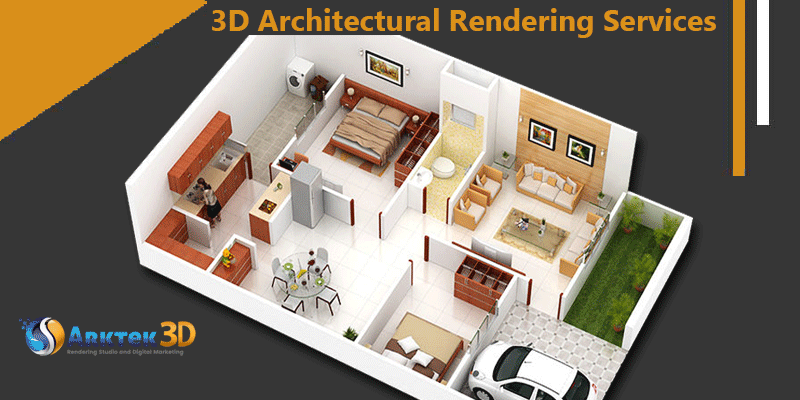Architectural rendering has been a part of the real estate industry for decades or might we say, even centuries. It started with simple paintings and drawings or in simple word blueprints represented over papers before the construction phase started. During the 90s era, there was a massive change in architectural rendering as everything moved from paper to the Computer Aided Design (CAD). This came along with a much-needed mix of video depiction that brought in possibilities for fly-through and walk-through in the design.
It was just a few years and 3D entered the world of architectural rendering. Now, it was possible for architects to use the 3D architectural rendering services to generate creative designs with the highest quality level maintained. Architectural visualizations now include hi-tech immersive experiences such as VR tours, game-like projects, Interactive build, CAVEs, and many more.
Understanding the process of 3D Architectural Rendering
Architectural 3D rendering services aren’t some simple to and fro job. It requires a proper understanding of each process starting from understanding the requirements to using the software and tools. Here are some important processes to be understood as a part of 3D architectural rendering services.
Understanding the Client’s Vision:
To successfully create an architecture model, the 3D artist or engineer needs to know everything about the project. With the use of sketches, plans, as well as reference images facilitated by the investor or client, the 3D artist can start visualizing projects in their mind. At this point, the camera angles fixed by the designers are mostly agreed upon as they are simple 2D plans.
3D Modelling:
A designer dedicated to catering top-notch architectural 3D rendering services uses a specialized form of modeling software for the creation of a digitally enhanced model. This particular phase is present in an analogous form to the structure of the building in a physical model. However, this model exists only in digital form.
Texturing:
In this phase of the architectural 3D rendering services, the 3D engineer applies images in the 2D form to look as realistic as possible in the 3D form. This step is similar to painting the physical model and gluing together materials & pictures onto a virtual model.
Lighting:
Lighting is an important feature in 3D architectural rendering services. It helps illuminate everything that is important for the 3D rendering process. It is crucial that the 3D artist replicates the real world lighting perfectly onto the virtual world. This particular process is fairly similar to the setup process established by a videographer or photographer before shooting.
3D Rendering:
The next step for architectural 3D rendering services

